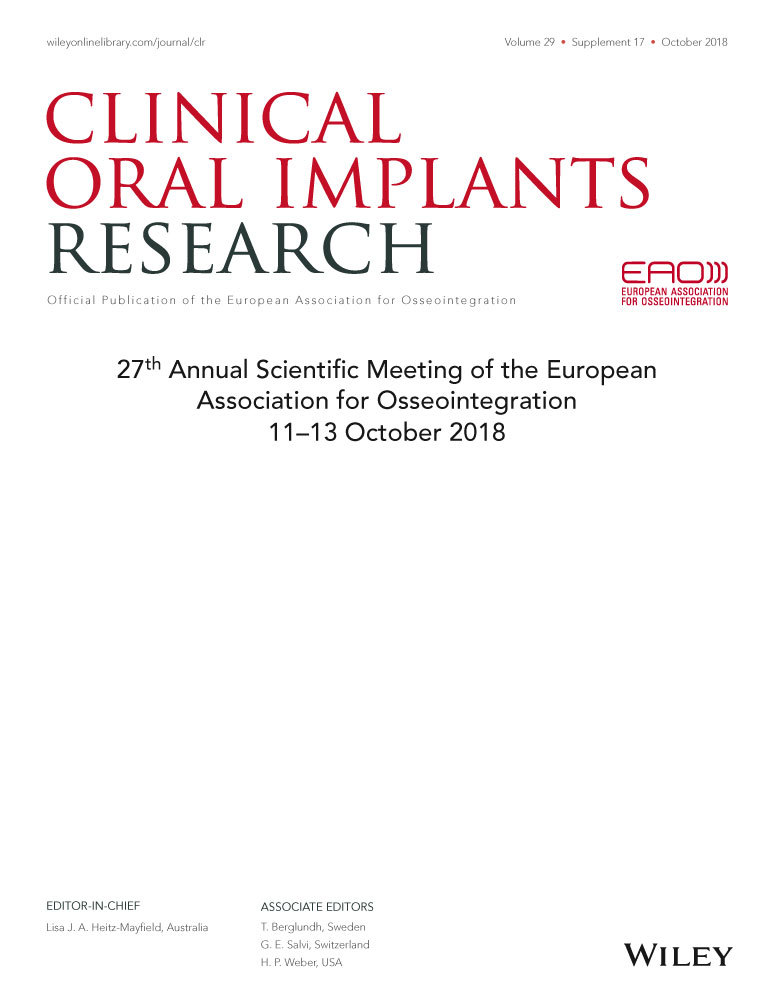A 10-year retrospective study on cemented versus screw retained implant abutment connection
12673 E-POSTER CLINICAL RESEARCH - PERI-IMPLANT BIOLOGY
Background
A large number of studies described implant survive and their short and long-term success with 94.6% early success rates and 89.7% even after more than 10 years of function. The failure of implant supported rehabilitation was either mechanical or biological. Few studies have conducted follow-ups for more than 10 years with regard to specific fixture-abutment connection.
Aim/Hypothesis
The aim of this retrospective study is to evaluate the long-term reliability and the incidence of technical and biological complications on single crowns supported by- cement retained abutment (CRA) and screwed retained abutment (SRA).
Material and Methods
A total of 300 single implant supported crowns performed from 2004 to 2007 on 300 different patients aged between 40 and 75 years were analyzed. Patients were divided in 150 group A (SRA) and 150 group B (CRA) selecting by inclusion criteria. The research was so performed-periapical radiographs performed with bite block, where crestal bone resorption (RC) was measured. The values were classified in three categories- <2 mm, between 2 and 4 mm, and greater than 4 mm. Bleeding on probing (BOP) and probing depth (PD) were measured. A cut-off of 5 mm was taken related to PD- >5 mm was considered a negative outcome. Prosthetic complications were recorded- abutment decementation, screw loosening and prosthetic fracture. The results were analyzed for statistical analysis.
Results
The data analysis showed a rate of 4% of implant failure during the 10 years follow up period. Therefore this data were not taken into consideration for complication analysis. Regarding biological aspect, results showed a positive BOP index at 84.2% of the sites under investigation. Specifically, SRA showed a BOP of 86.5% and CRA 81.4%. More over the probing depth (PD) >5 mm on peri-implant soft tissues analysis demonstrated a rate of 20.9% for CRA and 13.8% for SRA. The crestal bone loss radiographic measurements demonstrated for the range of RC < 2 mm, a value of 16% for SRA and 62% for CRA, RC >2 < 4 mm 70% for SRA and 31% for CRA and at the end RC > 4 mm revealed a 14% for SRA whilst 7 % for CRA. Regarding mechanical aspect of connection a total of 14.6% of complications occurred- 6.2% for SRA and 8.33% for CRA. Finally, about prosthetic aspects- 7.6% crown fracture for SRA and 2.78 %for CRA.
Conclusions and Clinical Implications
The results from this 10-year retrospective study showed that the two methods have positive long-term follow-ups, although the complications encountered. RC was statistically greater in the SRA group. In this regard, the possibility of having a better coupling between parts in the CRA method encourages the clinical use of these in terms of lower bone resorption values and screw loosening.




